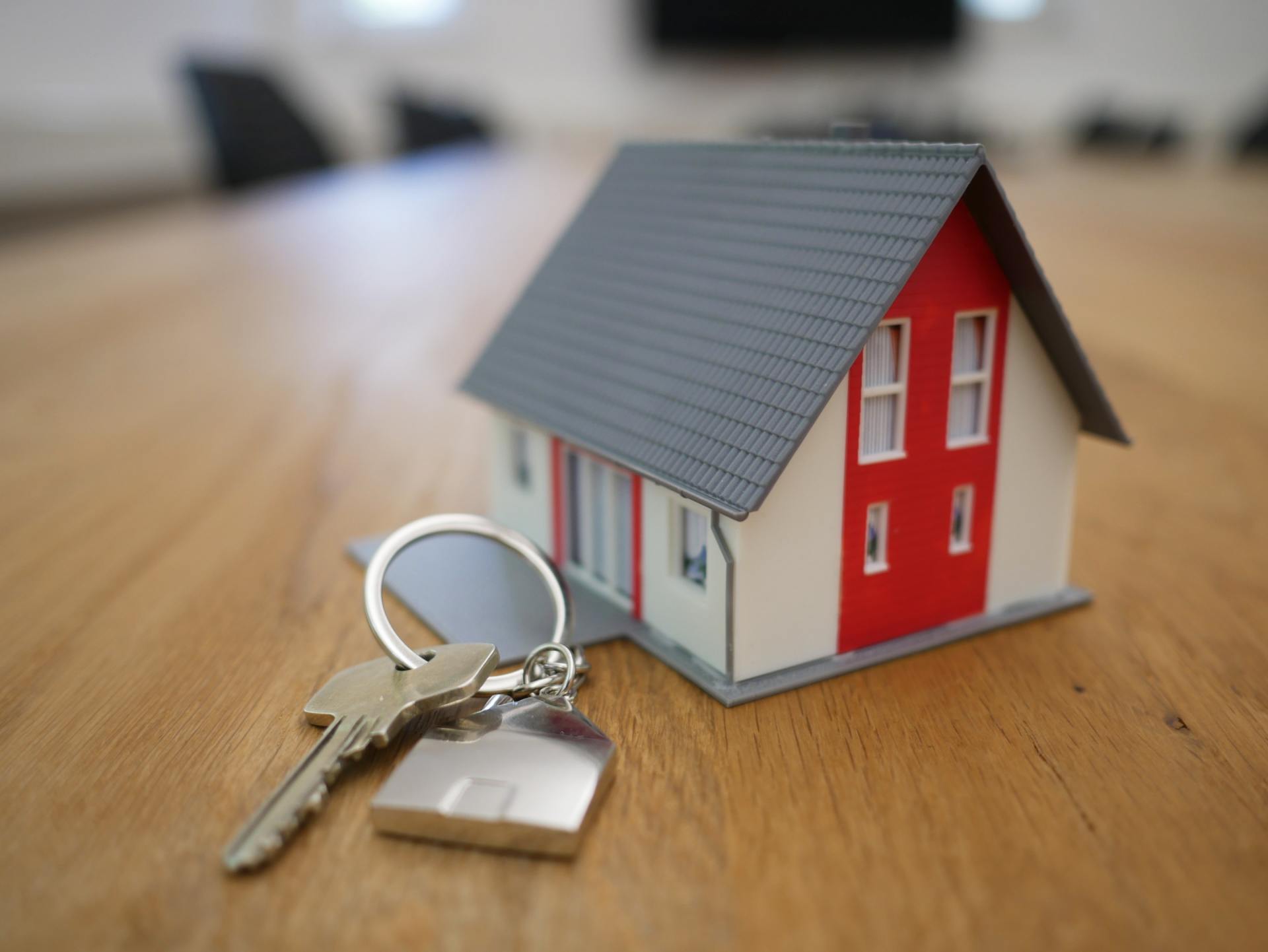Blog
SCHUSTER BLOG
Stay up-to-date with our local blog.
BLOG
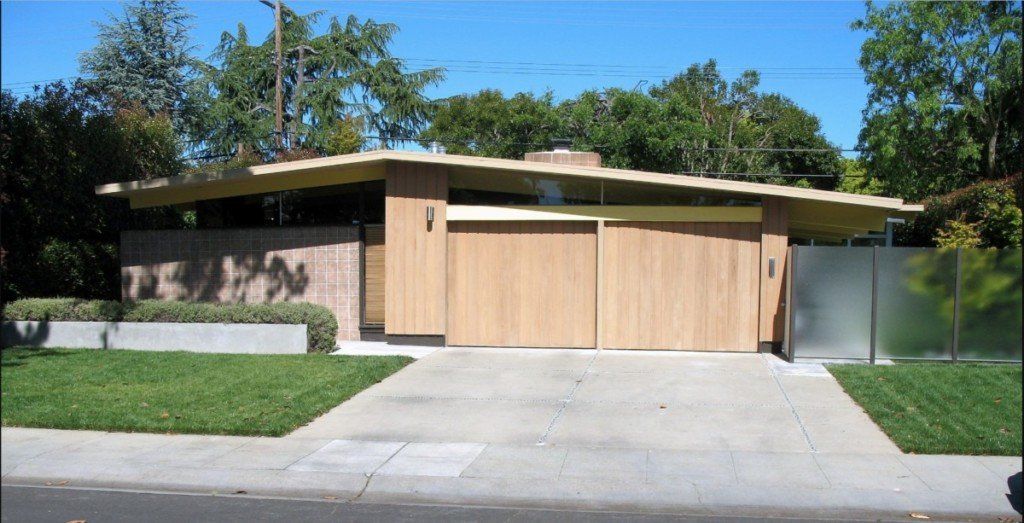
By Dave Schuster
•
September 16, 2022
Published September 15, 2022 by Jamie Forbes Updated on September 19th, 2022 In the 1950s and 1960s, real estate developer Joseph Eichler built thousands of homes in California that were designed to bring modern architecture to the masses. These postwar homes are known for open interior spaces, modern design, and access to the outdoors. They were innovative homes that introduced open floor plans, large windows, indoor-outdoor living spaces, and carports, all at a very affordable price. Today, these homes define the mid-century modern style and attract buyers from around the country. Whether you’re looking for a starter home in Oakland, CA, or a forever house in Sacramento, CA, an Eichler home is worth considering. Here’s everything you need to know about these houses, from their history and unique features to their lasting design and social impacts. An original Eichler in Palo Alto, CA What is an Eichler home? Eichler homes are perfect examples of mid-century modern architecture. Usually featuring exposed wood, large windows, open floor plans, and an organic connection to the landscape, these houses standardized a new quality of living that was previously only available to the wealthy. “Eichler homes redefined suburban design and lifestyle and let a growing middle class enjoy functional, stylish homes.” – MacKenzie Cain from Stratagem Construction The homes were generally part of a larger development full of trees, parks, and community spaces. Unlike other developments at the time, each home had a unique charm and didn’t look identical to the house next door. “They were architectural masterpieces that helped define how we live today,” says Natalie Alchadeff from Hero Brokers of Real Estate . “Architecturally, they feature post and beam construction and use the same materials inside and out for a cohesive look.” Today, Eichlers are often considered art pieces. As such, many owners have kept their homes untouched, while others have entirely updated them with modern amenities and appliances. Where were Eichler homes built? Joseph Eichler built about 11,000 homes throughout Central and Southern California – over 10,000 homes in the San Francisco Bay area and nearly 1,000 more around Los Angeles, Orange County, Thousand Oaks, and Granada Hills. He capitalized on the booming post-war economy, building high-quality homes for thousands of new middle-class home buyers. Nowadays, most remaining homes are in the Bay Area. Further south, “The Balboa Highlands neighborhood of Granada Hills is the last remaining development in Los Angeles County,” says Sue Kline from Santa Clarita Home Source and Balboa Highlands . “It features 108 houses built between 1963-64. The homes are protected by the Los Angeles Conservancy to maintain the original architecture.” “Eichler homes weren’t just a home, but were a way of living,” says Dave Schuster from the Schuster Real Estate Group . “They brought communities together and created a new ease of living. Nowadays, you can build Eichlers anywhere as long as you have imagination.” History of Eichler homes From the first prefabricated home in 1947 to filing for bankruptcy in 1966, let’s learn more about the history of these influential houses. History of 1950s suburbs As suburbia sprawled out in the 1950s due to low-cost housing and construction along with GI bill benefits for returning service members (primarily available to white veterans), many people were suddenly able to buy a home. Many cities and towns encouraged people to move to suburbs, creating planned communities and constructing highways to connect them to the city. Because of the high demand and low cost during the postwar boom, houses needed to be mass-produced. The most common choice among developers (notably Levitt and Sons) was the suburban ranch-style house , which quickly became the norm for 1950s families. They had an open floor plan, were low to the ground, and had plenty of yard space. However, because of their assembly-line production, they generally lacked quality and were often identical to neighboring homes. Also, they were usually zoned, built for, and sold to exclusively white communities. The first Eichlers After living in a San Francisco home built by the renowned architect Frank Lloyd Wright, Joseph Eichler fell in love with modern design. He also saw the benefits of low-cost, easy-to-build housing and wanted to improve the design and building quality while keeping it accessible to everyone. Eichler founded the Eichler Homes company and worked with Modernist architect Robert Anshen to design the first Eichlers. The first homes were prefabricated for owners to build on their lots, but he wasn’t satisfied with that approach and decided on planned, affordable communities instead. Between 1949 and 1966, he developed over 11,000 homes as part of planned developments across the San Francisco Bay and Los Angeles suburbs. A central part of his developments were socially-integrated community spaces, including parks and community centers. He was the first large-scale builder to sell to minoritized folks, even building a home on his private lot for an NAACP leader. His social views, especially his non-discrimination policy, led to his resignation from the National Association of Realtors after they refused to support him. Reception Eichler homes looked fairly strange to people at the time. Eventually, however, they became cornerstones of Modernist architecture. They were also remarkably affordable at only $10,000 – $46,500 , roughly $110,000 – $509,000 in today’s currency. In reaction to his success, other developers sprang on the opportunity to build low-cost, modern homes (called “Likelers”). While not as popular, they helped define the well-known California Modern style. The final years Following the success of his homes, Eichler expanded into both luxurious and subsidized multi-family housing. Unfortunately, this gamble didn’t attract an already small amount of renters. That, along with delayed returns on investments , longer completion schedules, and complicated permitting processes, led his company to file for bankruptcy in 1966. Today, Eichler’s are still considered quality homes and attract buyers who want to live the mid-century lifestyle. An Eichler home in Granada Hills, CA What do Eichler homes look like? Eichler homes have open living spaces, large windows, skylights, and modern, nature-inspired architecture. They always use “clean lines, muted curves, small windows usually facing the entrance, and large windows facing an outdoor space in the back,” notes Linda Green , REALTOR with United Real Estate . “They feature a front-to-back design, with public spaces in front and living spaces in the back.” To separate space without adding walls, they feature front-to-back planning that puts living spaces in the back of the home. If you’re wondering whether a home is a true Eichler (and not a “Likeler”), look for these features: Small windows that face the street and large windows that face the backyard A recessed entryway with broad, low-gabled roofing Wood exteriors, entrances, and paneling made from redwood or mahogany Exposed, widely-spaced posts and beams Built-in furnishings and appliances A center courtyard and a large, bright roofed atrium Open-concept kitchen, dining, and living areas, sometimes with glass partitions Unobstructed views of the outdoors “Taking a cue from Frank Lloyd Wright, Eichler incorporated organic design into affordable homes, says Nicole Crocker from Classic Home Improvements . “The homes featured clean lines, expansive windows, open spaces, and distinctive rooflines, all at an accessible cost.” Jennifer Okhovat from Jenny Okhovat Homes also gives her take on true Eichler’s. “A true Eichler will have small windows facing the street, classic post-and-beam construction, and floor-to-ceiling glass windows in the rear of the house that look out onto patios and yards,” she says. “One of Eichler’s signature concepts was to bring the outside in. He did this with outdoor atriums in the center of the home, flat or low-sloping A-framed roofs, skylights, and clean geometric lines.” According to Eichler , he wanted to build “well-designed houses with a sense of moral purpose.” His houses redefined how families lived, prioritizing sustainability, nature, functionality, and long-lasting appeal. Notably, he brought people together in new ways through the unique floor plan and accessibility to the outdoors. Typical Eichler home floor plan Most Eichlers have similar floor plans. They are around 2,000 square feet and feature 1-4 bedrooms, 1-2 bathrooms, open-concept living spaces, outdoor areas, multipurpose rooms, and a garage or carport at the front of the home. They have an “abundance of exposed wood and large, open spaces,” says Allison Van Wig from Van Wig and Associates . “Still popular today, mid-century architecture embodies the laid back lifestyle that California is known for.” Additionally, Eichler homes popularized the master bedroom, bringing more appeal to new parents. An original blueprint of an Eichler home Eichler home renovation ideas If you own an Eichler or want to incorporate mid-century modern design into your home, read on for design and renovation tips straight from the experts. “Major renovations or remodels are tricky, especially if you want to be loyal to the original concept. Also, some neighborhoods can be very protective of the original mid-century style, meaning you may not be allowed to make any changes.” – Bob Hinz, Owner of HomeWrights Custom Homes “If you’re redesigning your Eichler home, consider minimalism in your plans. Bold statement pieces like large plants or sculptures are standard in mid-century modern homes. Focus on the basics with a few accessories to complete the look. To keep the design clean, try to avoid clutter; this helps the open living space speak for itself.” – Eric Sztanyo from Team Sztanyo “If you’re looking to replace your windows, choose something that compliments the simple look. Avoid busy patterns and use something that fits with the rest of your home’s architecture. Finally, be sure to bring in as much natural light as possible.” – The team at Homefix Custom Remodeling “Because of their unique design, it can be hard to renovate an Eichler home. Roofs are especially challenging because of their low pitch and outdated building materials. If you’re looking for a roofing contractor, ask about new technologies, waterproofing capabilities, and how closely it will look to the original style.” – The team at 619 Roofing Why were they so popular? At the time, developers built homes to look identical to one another to make them easily replicable and save money on building costs. Eichler homes changed that by bringing a distinctive, modern style and making it available to an average homeowner. Surrounded by nature and community spaces, people fell in love with their homes and integrated communities. This style of architecture redefined how middle-class families lived and how houses should look. Tim Hampton from America’s Best House Plans notes that “their exteriors are well-known for their minimal ornamentation, maintainable landscaping, and slanted, low, or flat rooflines. As an influential style, many new mid-century modern house plans try to capture its design and sentiment.” Expert advice: what makes Eichler’s unique? Eichler homes were unique for their atrium-style entrance, glass facades, and the multipurpose room next to the kitchen. If you’re looking to buy a house, keep these in mind. – Elizabeth Burton, designer at Sandpiper What makes Eichler homes so expensive? The first Eichler homes cost just $10,000, including furniture and appliances. They were priced below their value because of the postwar infrastructure boom, suburban craze, and Eichler’s desire for affordability. According to Margo Follbaum from First Choice Realty , “they sold quickly in the 1960s. Today, they sell even quicker.” Nowadays, Eichlers can sell for over $3 million, 30,000% more than their initial price of $10,000. This is mainly because of a renewed interest in mid-century modern style, their location in the pricey Bay Area market, their unique qualities, and their status as collector’s items. The cost of different types of Eichlers Eichler’s generally fall into three categories: original, updated, and extensively upgraded. Original and extensively upgraded homes command the highest price but make up the smallest percentage of remaining Eichler houses. Most Eichlers have been slowly upgraded since the 1950s and are not worth as much as the other two types. Expert advice: Eichler’s are popular throughout the west coast Once limited to California, Eichler-inspired homes have found their way to Vancouver and Victoria Island. The exposed beams, open spaces, expansive windows, and connection to nature make it ideal for the Pacific Northwest. When they hit the market, these homes sell fast. – Calvin Vo, Co-Founder of Jovi Realty The Eichler community Because of their unique design, Eichler developments often attracted artists, engineers, architects, and researchers. “Because of their novelty, buyers were initially resistant to his vision,” notes Patty Hyun , an East Bay real estate agent. “However, over time they have become revered across the country as modern masterpieces.” Today, people who live in Eichler homes are fiercely loyal. Many have restored them to fit their original designs, replacing everything from door handles to faucets. These Eichler communities bring people together, sharing contractors, real estate agents, plumbers, and furniture companies specializing in Eichler design. They believe that Eichler homes are more than modern houses, but also a philosophy of living.
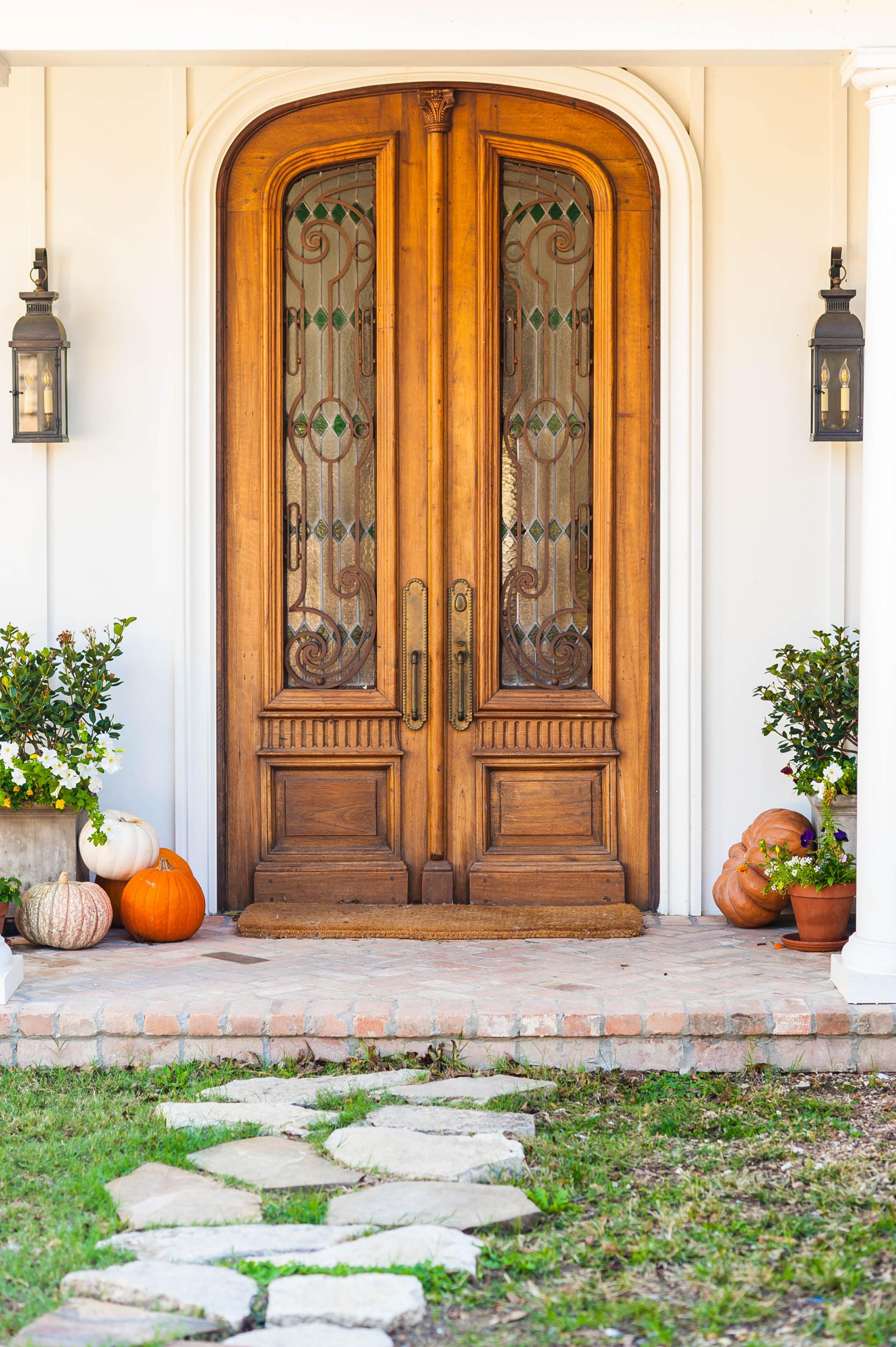
By Sam Schuster
•
August 12, 2020
It's the dog days of summer here in Arizona and everyone is feeling the heat, with our A/C's running pretty much around the clock it can really start to drain your wallet. Here are some helpful tips to keep the temperature (and your utility bill) low. Keep the blinds closed It's always temping to keep blinds open to let in natural light, but it can also make your A/C work harder. Try keeping the blinds closed during the hottest part of the day, opt for light colored blinds and drapes that reflect light rather than absorb it. Appliances While windows are the biggest factor when it comes to cooling your home, the appliances inside give off a lot of heat as well. Keep the stove/oven off during the day and try to do the laundry after the sun has set. Change your filters regularly Every 4-6 weeks make sure you replace the filters, not only do they get dirty but they also make your A/C work harder to move air through the home. Know the size of the filter and always keep one on hand. While on the subject of maintenance, make sure to have your A/C inspected at least once a year, ideally twice to make sure it's running smoothly and efficiently.
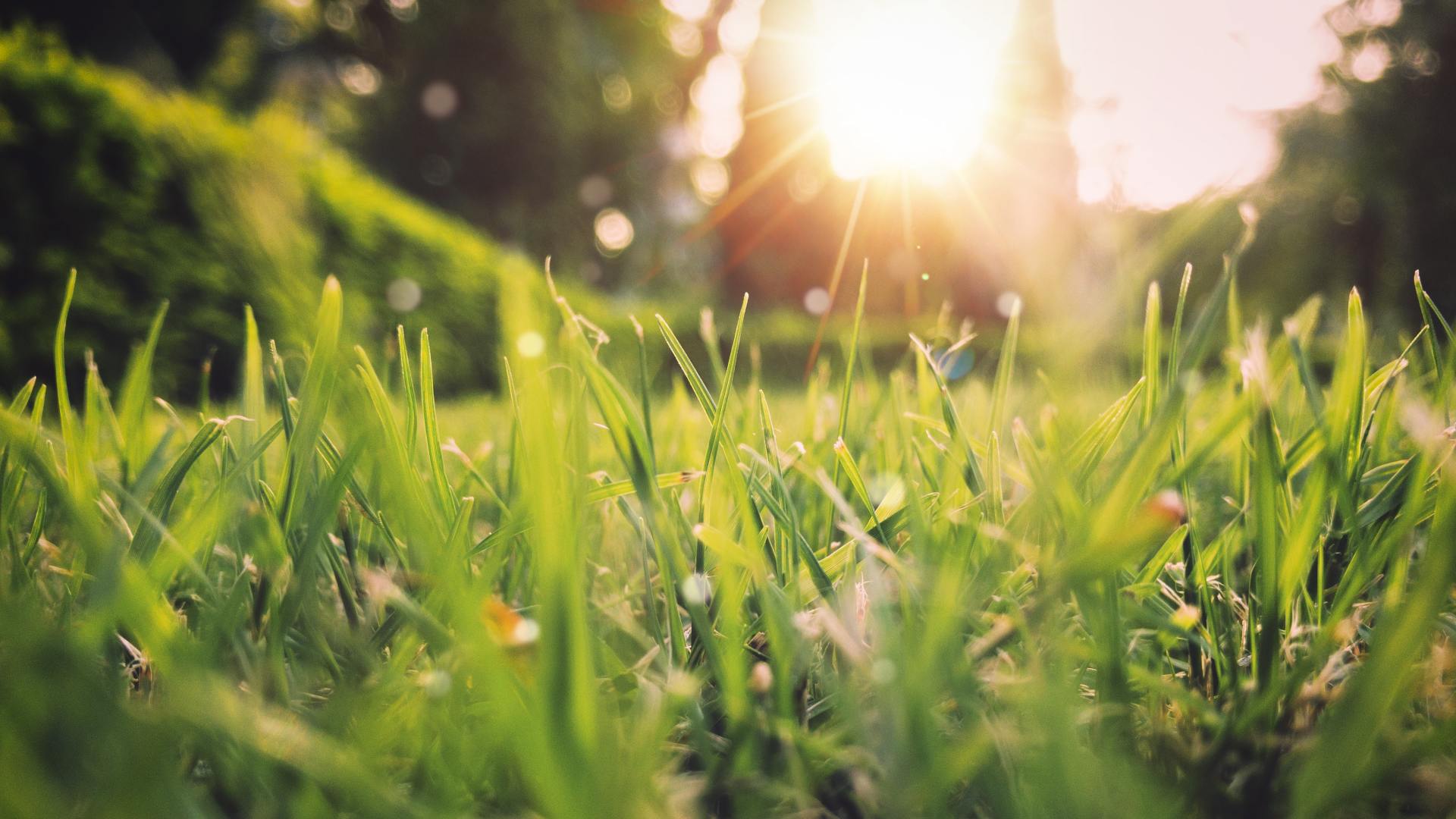
April 1, 2020
In addition to cleaning up around the house, there are several landscaping activities that you generally want to do in the springtime. The question is, where do you start? If you’re not sure how to tackle your spring to-do list, here are a few suggestions. These are some of the most common landscaping tasks that need doing once things start to warm up, and knocking them out early can make other landscaping tasks easier as the year goes on. Who knows, taking care of some of these items might even get you inspired to take on a larger landscaping project later in the year. Clean Up That Winter Refuse The winter can be rough on your lawn, with clumps of leaves that haven’t quite decayed, sticks and branches that fell in a winter storm, muddy spots… it can all leave a bit of a mess behind. Spend some time cleaning up the mess left by winter before you get into any other tasks and you’ll find that the rest of your spring to-do list will be much easier. Prune the Trees and Shrubs Early spring is a great time to prune most of your trees and shrubs, since it’s before they get into a strong growth period. Early pruning allows you to shape them the way you want them to be and gives you a chance to eliminate unwanted overhangs and encroachment. If you wait until there’s new growth you can actually stunt some of that growth and make it harder to control how your trees and shrubs are forming. Prep Your Lawn If you want your lawn to look its best, you need to show it some love in the spring. Aerate the lawn to help break up soil, dethatch it to help it grow in thicker, and sow some seed to fill in bare spots once it’s warm enough. If your lawn has an uneven surface after the winter, bringing in a roller to go over the lawn wouldn’t be a bad idea either. Clean Up Your Flower Beds If you’ve got flower beds around your home, chances are they could use a bit of picking up after the winter. Get rid of any damaged plants, pull any weeds or grass that tried to get established during the winter, and tidy up any debris or other crud that might have found their way into your beds. You should also pull away the winter mulch surrounding your perennials and divide them to get your beds off to a good start. Feed and Protect While you’re working on your lawn and your flower beds, go ahead and take the time to prep them for spring growth. Add new mulch to your beds as needed, give your lawn a nice dose of fertilizer, and make sure that all your other plants are similarly fed and protected. Everything’s going to be doing a lot of growing in the coming months, so you want to make sure that they have everything they need. Plan Your Summer This is also a good time to prepare for late spring and summer projects as well. If you’re going to have a garden, take the time to start prepping it now by tilling the soil, working in compost and starting some of your spring seeds indoors. If you’re going to undertake a construction project or add new features to your lawn, go ahead and start clearing the area. The work you put in now will make things so much easier later in the year.

April 1, 2020
In times like these, it’s important to pull together as a community and support each other in any way possible. This includes the small businesses in your community, since they are an essential part of what keeps your community going; without your support during the darker times, some of them may not survive to see the sun come out again. How are you supposed to do that in a limited-contact or social isolation scenario, though? Fortunately, there are still several options available that will help you to help those local businesses that keep your community running. Buy Gift Certificates One great way to support local businesses is to buy gift cards and gift certificates even if you don’t need them right now. This allows you to make a simple purchase that minimizes potential contact while giving the business that issued the certificate some much-needed income. Once things improve, you can then return to the business and take your time using the gift cards you purchased. As an added bonus, they’re also easy to give to others if you know someone who’s in need. Buy Branded Merchandise Another good option is to buy branded merchandise such as t-shirts or coffee mugs that advertise the business. On top of the usual benefits of making a purchase, these items help to advertise the business as well. As an added bonus, buying branded merchandise helps you to show the business owner that you’re there to support the business specifically. Order Online or On the Phone Can’t get out? Check and see which businesses in your area offer online ordering and make use of that feature. If you can’t order online, give them a call and inquire about placing an order. You can even make arrangements for delivery or pickup while you’re on the phone. Tip for Deliveries and Carry-Outs A lot of people are relying on delivery and carry-out orders these days, especially from local restaurants. Unfortunately, a lot of people tip very little if at all for these services. Remember that a lot of employees are facing reduced hours in this stressful time, and every dollar helps. Be sure to tip even if you normally wouldn’t, and be generous when you do. Spread the Word There are many types of support. Financial support is definitely important for local businesses trying to stay open, but not everyone can help out financially. If you can’t afford to shop right now, try to get the word out on social media and other platforms. Share posts, talk about the businesses that you’d like to support and even post pictures of yourself wearing some branded merch. Every little bit helps, and someone might see your post and decide that they need to support local shops as well. Donate Your Refunds A major problem that small venues face is the refunding of canceled events. They’ve already spent money on advertising and racked up other costs, and now they’re losing their portion of ticket sales. If you have tickets for an event that was canceled and unlikely to be rescheduled, call the box office and inquire about donating your refund instead. While not all venues will do this, donating your ticket price lets those that do recoup some of what they spent and may even help them to stay open in the face of additional cancellations. Be Considerate Local businesses are a part of your community, and as such they want to see the community thrive. Situations like this are very stressful for business owners and employees alike, and the last thing that they want to see is people fighting over merchandise or those in need having to do without because someone else hoarded all the toilet paper. When shopping at local businesses, be courteous to other shoppers, maintain a safe distance so no one is crowded, and avoid the temptation to grab everything when you just need one or two items.
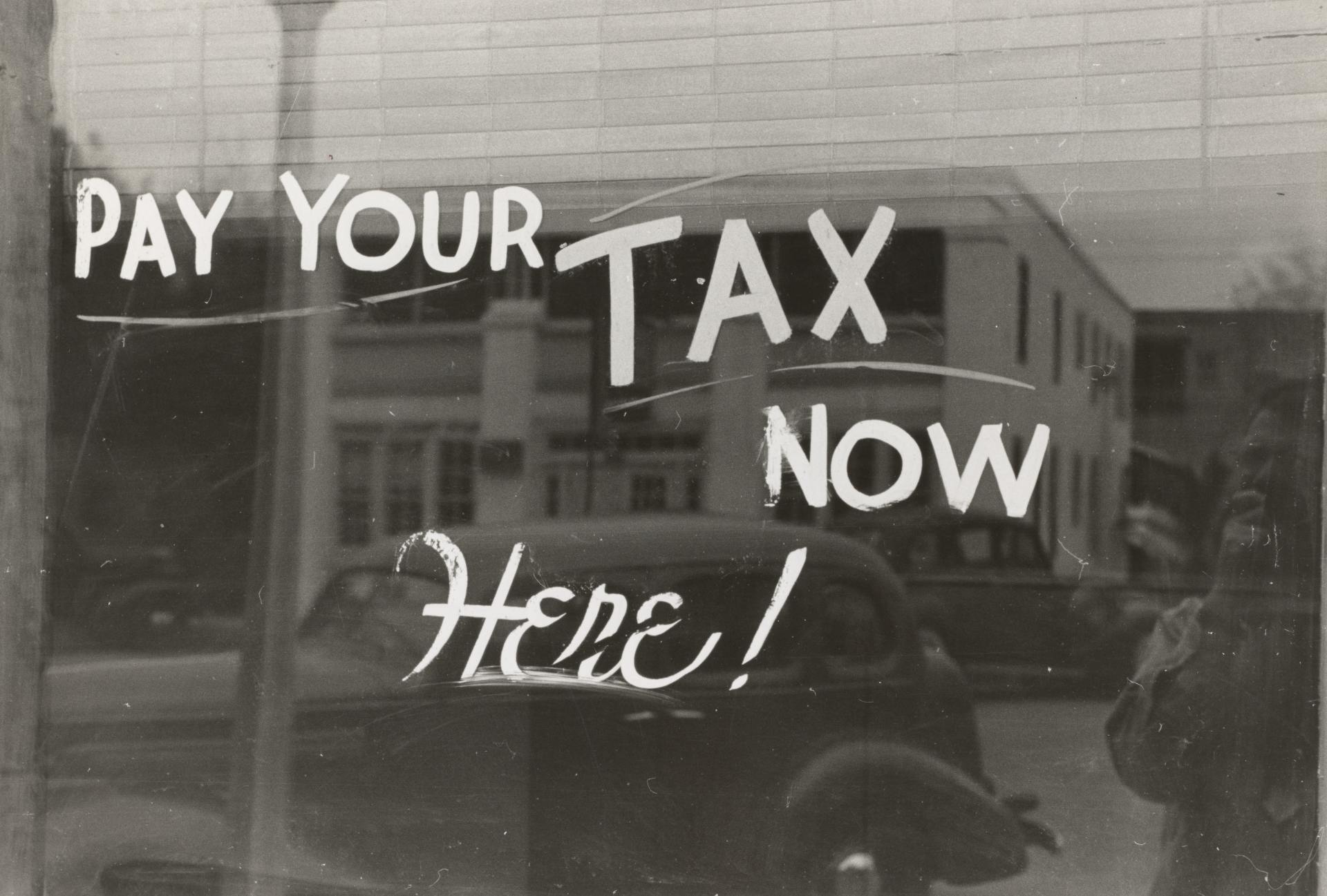
March 8, 2020
Important Deadlines to Know April 15th, 2020: Deadline to file and pay taxes or request a filing extension. October 15th, 2020: Last day to file a tax return if you received an extension from the IRS. Standard deductions have increased for Tax Year 2019: Single = $12,200 up from $12,000 in 2018 Married = $24,400 up from $24,000 Head of Household = $18,350 up from $18,350 Individual contributions increased for 401(k) retirement accounts for tax year 2020 Under age 50 = $19,500 up from $19,000 in 2019 Over age 50 = $26,000 up from $25,000 in 2019 Get ahead! FSA (Flexible Spending Account) limits increased for 2020 to $2,750, up from $2,700 in 2019. remember that this is "use it or lose it" money. Contribute a set amount per paycheck and use the fund for medical expenses like: first aid kits, contact lenses, chiropractic care, dental work, braces, co-pays, etc. State and local taxes (SALT): Enacted last year, taxpayers who itemize can only deduct up to $10,000 on a combination of state income taxes, sales tax, local taxes and property tax. GET ORGANIZED THIS TAX SEASON Use these top 3 tips to stay on track with your 2019 taxes KNOW YOUR DEADLINES Stay ahead of the game to avoid surprises or late penalties. February 2020 - compile all W-2, 1098 or 1099 forms. these should have been received by January 31. April 15, 2020 - deadline to file 2019 taxes or file an extension request. LEAVE PLENTY OF TIME Start collecting documents and sorting files sooner rather than later. If something is missing, you'll have ample time to track it down, instead of rushing last minute. DETERMINE YOUR FILING SYSTEM Keep a container with labeled folders: home and office expenses vehicle and mileage costs education costs child care expenses medical expenses miscellaneous Upload digital documents to a secure digital platform: Dropbox, Google Drive, The Vault Keep a backup on a hard drive Need a professional to help you get started on your taxes? Call me to get a great referral! 602-717-0796

February 21, 2020
Existing Home Sales Looking Up Existing home sales increased in 2019. Explained: Buyers took advantage of low interest rates, leading to more homes being sold. Bigger Picture: It’s a good time for sellers with homes spending about a month on the market. Home Prices Continue to Rise Home prices crept up slowly year-over-year in 2019. Explained: Inventory is still tight, contributing to a steady increase in prices. Bigger Picture: Despite this steady increase, historically low mortgage rates make the monthly payment more affordable. First-Time Buyers Toss Their hats in the Ring First-time buyers comprised 33% of all home buyers. Explained: Many older millennials (ages 29-38) are getting into the market. Bigger Picture: Low rates make a monthly mortgage more appealing than the monthly rent, encouraging young people to purchase a home and build equity. 2005 vs. 2020 Changing Time, Changing Markets. Many people are approaching this year anticipating another recession. However, times have changed, and there are quite a few differences between the years that led up to 2008 and today that may ease these concerns. At the end of 2019, the U.S jobless claims were at a 50-year low. When adjusted for inflation, today’s home prices are lower than those in 2006 that contributed to the crash. Subprime or nonprime loans (granted to borrowers unable to qualify for conventional mortgages) only made up a small percentage of loans in the past five years compared to 20% in 2005. Stricter lending standards reduce the likelihood of borrowers defaulting on their mortgages. Homeowners are more cautious, choosing to retain equity in their homes instead of borrowing against them. Don’t hesitate to call me with your questions on the state of the real estate market! I’m honored to share more market updates and serve all your buying and selling needs in the new year.

FIND YOUR DREAM PROPERTY
Can’t find what you want in our listings? Let us know what you’re looking for and we’ll help you find the house of your dreams.
CONTACT US

By Dave Schuster
•
September 16, 2022
Published September 15, 2022 by Jamie Forbes Updated on September 19th, 2022 In the 1950s and 1960s, real estate developer Joseph Eichler built thousands of homes in California that were designed to bring modern architecture to the masses. These postwar homes are known for open interior spaces, modern design, and access to the outdoors. They were innovative homes that introduced open floor plans, large windows, indoor-outdoor living spaces, and carports, all at a very affordable price. Today, these homes define the mid-century modern style and attract buyers from around the country. Whether you’re looking for a starter home in Oakland, CA, or a forever house in Sacramento, CA, an Eichler home is worth considering. Here’s everything you need to know about these houses, from their history and unique features to their lasting design and social impacts. An original Eichler in Palo Alto, CA What is an Eichler home? Eichler homes are perfect examples of mid-century modern architecture. Usually featuring exposed wood, large windows, open floor plans, and an organic connection to the landscape, these houses standardized a new quality of living that was previously only available to the wealthy. “Eichler homes redefined suburban design and lifestyle and let a growing middle class enjoy functional, stylish homes.” – MacKenzie Cain from Stratagem Construction The homes were generally part of a larger development full of trees, parks, and community spaces. Unlike other developments at the time, each home had a unique charm and didn’t look identical to the house next door. “They were architectural masterpieces that helped define how we live today,” says Natalie Alchadeff from Hero Brokers of Real Estate . “Architecturally, they feature post and beam construction and use the same materials inside and out for a cohesive look.” Today, Eichlers are often considered art pieces. As such, many owners have kept their homes untouched, while others have entirely updated them with modern amenities and appliances. Where were Eichler homes built? Joseph Eichler built about 11,000 homes throughout Central and Southern California – over 10,000 homes in the San Francisco Bay area and nearly 1,000 more around Los Angeles, Orange County, Thousand Oaks, and Granada Hills. He capitalized on the booming post-war economy, building high-quality homes for thousands of new middle-class home buyers. Nowadays, most remaining homes are in the Bay Area. Further south, “The Balboa Highlands neighborhood of Granada Hills is the last remaining development in Los Angeles County,” says Sue Kline from Santa Clarita Home Source and Balboa Highlands . “It features 108 houses built between 1963-64. The homes are protected by the Los Angeles Conservancy to maintain the original architecture.” “Eichler homes weren’t just a home, but were a way of living,” says Dave Schuster from the Schuster Real Estate Group . “They brought communities together and created a new ease of living. Nowadays, you can build Eichlers anywhere as long as you have imagination.” History of Eichler homes From the first prefabricated home in 1947 to filing for bankruptcy in 1966, let’s learn more about the history of these influential houses. History of 1950s suburbs As suburbia sprawled out in the 1950s due to low-cost housing and construction along with GI bill benefits for returning service members (primarily available to white veterans), many people were suddenly able to buy a home. Many cities and towns encouraged people to move to suburbs, creating planned communities and constructing highways to connect them to the city. Because of the high demand and low cost during the postwar boom, houses needed to be mass-produced. The most common choice among developers (notably Levitt and Sons) was the suburban ranch-style house , which quickly became the norm for 1950s families. They had an open floor plan, were low to the ground, and had plenty of yard space. However, because of their assembly-line production, they generally lacked quality and were often identical to neighboring homes. Also, they were usually zoned, built for, and sold to exclusively white communities. The first Eichlers After living in a San Francisco home built by the renowned architect Frank Lloyd Wright, Joseph Eichler fell in love with modern design. He also saw the benefits of low-cost, easy-to-build housing and wanted to improve the design and building quality while keeping it accessible to everyone. Eichler founded the Eichler Homes company and worked with Modernist architect Robert Anshen to design the first Eichlers. The first homes were prefabricated for owners to build on their lots, but he wasn’t satisfied with that approach and decided on planned, affordable communities instead. Between 1949 and 1966, he developed over 11,000 homes as part of planned developments across the San Francisco Bay and Los Angeles suburbs. A central part of his developments were socially-integrated community spaces, including parks and community centers. He was the first large-scale builder to sell to minoritized folks, even building a home on his private lot for an NAACP leader. His social views, especially his non-discrimination policy, led to his resignation from the National Association of Realtors after they refused to support him. Reception Eichler homes looked fairly strange to people at the time. Eventually, however, they became cornerstones of Modernist architecture. They were also remarkably affordable at only $10,000 – $46,500 , roughly $110,000 – $509,000 in today’s currency. In reaction to his success, other developers sprang on the opportunity to build low-cost, modern homes (called “Likelers”). While not as popular, they helped define the well-known California Modern style. The final years Following the success of his homes, Eichler expanded into both luxurious and subsidized multi-family housing. Unfortunately, this gamble didn’t attract an already small amount of renters. That, along with delayed returns on investments , longer completion schedules, and complicated permitting processes, led his company to file for bankruptcy in 1966. Today, Eichler’s are still considered quality homes and attract buyers who want to live the mid-century lifestyle. An Eichler home in Granada Hills, CA What do Eichler homes look like? Eichler homes have open living spaces, large windows, skylights, and modern, nature-inspired architecture. They always use “clean lines, muted curves, small windows usually facing the entrance, and large windows facing an outdoor space in the back,” notes Linda Green , REALTOR with United Real Estate . “They feature a front-to-back design, with public spaces in front and living spaces in the back.” To separate space without adding walls, they feature front-to-back planning that puts living spaces in the back of the home. If you’re wondering whether a home is a true Eichler (and not a “Likeler”), look for these features: Small windows that face the street and large windows that face the backyard A recessed entryway with broad, low-gabled roofing Wood exteriors, entrances, and paneling made from redwood or mahogany Exposed, widely-spaced posts and beams Built-in furnishings and appliances A center courtyard and a large, bright roofed atrium Open-concept kitchen, dining, and living areas, sometimes with glass partitions Unobstructed views of the outdoors “Taking a cue from Frank Lloyd Wright, Eichler incorporated organic design into affordable homes, says Nicole Crocker from Classic Home Improvements . “The homes featured clean lines, expansive windows, open spaces, and distinctive rooflines, all at an accessible cost.” Jennifer Okhovat from Jenny Okhovat Homes also gives her take on true Eichler’s. “A true Eichler will have small windows facing the street, classic post-and-beam construction, and floor-to-ceiling glass windows in the rear of the house that look out onto patios and yards,” she says. “One of Eichler’s signature concepts was to bring the outside in. He did this with outdoor atriums in the center of the home, flat or low-sloping A-framed roofs, skylights, and clean geometric lines.” According to Eichler , he wanted to build “well-designed houses with a sense of moral purpose.” His houses redefined how families lived, prioritizing sustainability, nature, functionality, and long-lasting appeal. Notably, he brought people together in new ways through the unique floor plan and accessibility to the outdoors. Typical Eichler home floor plan Most Eichlers have similar floor plans. They are around 2,000 square feet and feature 1-4 bedrooms, 1-2 bathrooms, open-concept living spaces, outdoor areas, multipurpose rooms, and a garage or carport at the front of the home. They have an “abundance of exposed wood and large, open spaces,” says Allison Van Wig from Van Wig and Associates . “Still popular today, mid-century architecture embodies the laid back lifestyle that California is known for.” Additionally, Eichler homes popularized the master bedroom, bringing more appeal to new parents. An original blueprint of an Eichler home Eichler home renovation ideas If you own an Eichler or want to incorporate mid-century modern design into your home, read on for design and renovation tips straight from the experts. “Major renovations or remodels are tricky, especially if you want to be loyal to the original concept. Also, some neighborhoods can be very protective of the original mid-century style, meaning you may not be allowed to make any changes.” – Bob Hinz, Owner of HomeWrights Custom Homes “If you’re redesigning your Eichler home, consider minimalism in your plans. Bold statement pieces like large plants or sculptures are standard in mid-century modern homes. Focus on the basics with a few accessories to complete the look. To keep the design clean, try to avoid clutter; this helps the open living space speak for itself.” – Eric Sztanyo from Team Sztanyo “If you’re looking to replace your windows, choose something that compliments the simple look. Avoid busy patterns and use something that fits with the rest of your home’s architecture. Finally, be sure to bring in as much natural light as possible.” – The team at Homefix Custom Remodeling “Because of their unique design, it can be hard to renovate an Eichler home. Roofs are especially challenging because of their low pitch and outdated building materials. If you’re looking for a roofing contractor, ask about new technologies, waterproofing capabilities, and how closely it will look to the original style.” – The team at 619 Roofing Why were they so popular? At the time, developers built homes to look identical to one another to make them easily replicable and save money on building costs. Eichler homes changed that by bringing a distinctive, modern style and making it available to an average homeowner. Surrounded by nature and community spaces, people fell in love with their homes and integrated communities. This style of architecture redefined how middle-class families lived and how houses should look. Tim Hampton from America’s Best House Plans notes that “their exteriors are well-known for their minimal ornamentation, maintainable landscaping, and slanted, low, or flat rooflines. As an influential style, many new mid-century modern house plans try to capture its design and sentiment.” Expert advice: what makes Eichler’s unique? Eichler homes were unique for their atrium-style entrance, glass facades, and the multipurpose room next to the kitchen. If you’re looking to buy a house, keep these in mind. – Elizabeth Burton, designer at Sandpiper What makes Eichler homes so expensive? The first Eichler homes cost just $10,000, including furniture and appliances. They were priced below their value because of the postwar infrastructure boom, suburban craze, and Eichler’s desire for affordability. According to Margo Follbaum from First Choice Realty , “they sold quickly in the 1960s. Today, they sell even quicker.” Nowadays, Eichlers can sell for over $3 million, 30,000% more than their initial price of $10,000. This is mainly because of a renewed interest in mid-century modern style, their location in the pricey Bay Area market, their unique qualities, and their status as collector’s items. The cost of different types of Eichlers Eichler’s generally fall into three categories: original, updated, and extensively upgraded. Original and extensively upgraded homes command the highest price but make up the smallest percentage of remaining Eichler houses. Most Eichlers have been slowly upgraded since the 1950s and are not worth as much as the other two types. Expert advice: Eichler’s are popular throughout the west coast Once limited to California, Eichler-inspired homes have found their way to Vancouver and Victoria Island. The exposed beams, open spaces, expansive windows, and connection to nature make it ideal for the Pacific Northwest. When they hit the market, these homes sell fast. – Calvin Vo, Co-Founder of Jovi Realty The Eichler community Because of their unique design, Eichler developments often attracted artists, engineers, architects, and researchers. “Because of their novelty, buyers were initially resistant to his vision,” notes Patty Hyun , an East Bay real estate agent. “However, over time they have become revered across the country as modern masterpieces.” Today, people who live in Eichler homes are fiercely loyal. Many have restored them to fit their original designs, replacing everything from door handles to faucets. These Eichler communities bring people together, sharing contractors, real estate agents, plumbers, and furniture companies specializing in Eichler design. They believe that Eichler homes are more than modern houses, but also a philosophy of living.
ABOUT SCHUSTER REAL ESTATE GROUP
Along with my wonderful family, I have resided in beautiful Scottsdale for more than 28 years, with my roots originally from St. Paul Minnesota. My lovely wife....READ MORE
© 2020 All Rights Reserved, David Schuster, PLLC.


